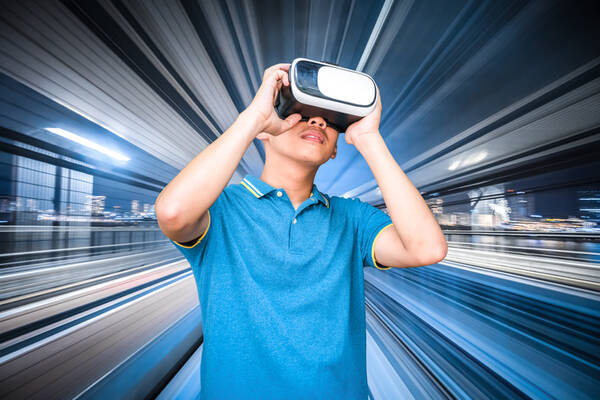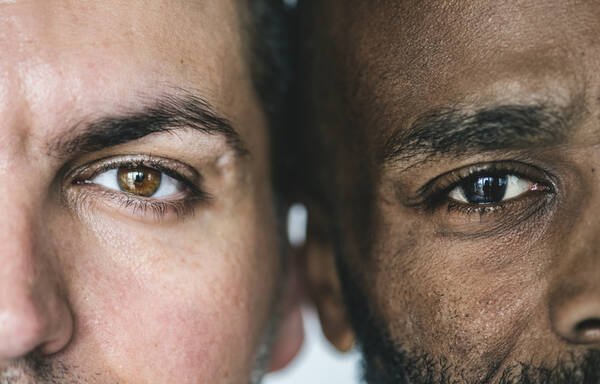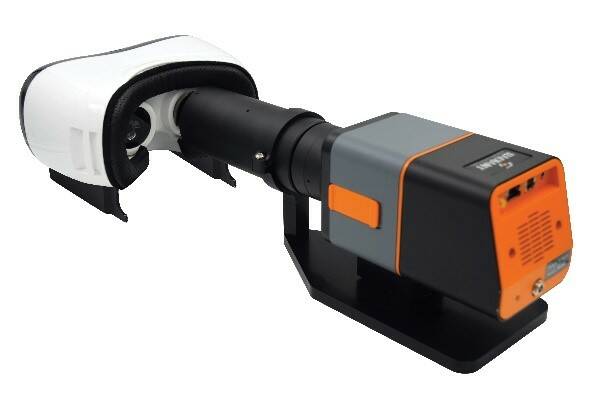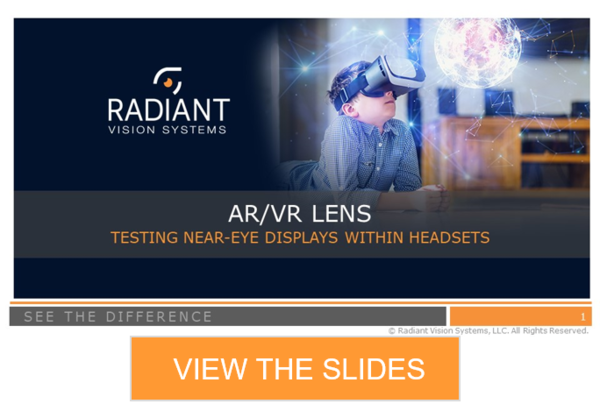Can Technology Make Us Better Humans? VR and Empathy

The old phrase “to walk a mile in another man’s shoes” is taking on new meaning in the age of augmented and virtual reality (AR and VR). With these technologies it’s now possible to completely immerse ourselves in an virtual experience and take on the perspective of another person. VR has even been referred to as the “ultimate empathy machine” since it allows users to experience any situation from any point of view. Studies1 are showing that AR/VR can indeed shift a user’s attitudes and feelings, making the technology a key element in the new frontier of empathy education, and helping promote compassion and community awareness.
Helping the Homeless
New research from Stanford University2 found that a VR experience can increase participants’ compassion for the homeless. Most significantly, VR was shown to increase awareness, compassion, and advocacy for the homeless more so than other more traditional types of “perspective taking” such as reading about or imagining the experience of being homeless.
Half of study participants read a narrative about the life of a homeless person: being evicted from your home, living on the streets in your car, and feeling threatened by thugs. The other half of participants experienced the same storyline while wearing a VR headset. Immediately after the experience, and when measured again eight weeks later, the VR participants evidenced a greater increase in empathy as measured by changes in attitude, signing a petition for a homeless housing measure in their area, and donating to homeless shelters. Learn more…
Decreasing Racial Bias

One landmark study3 used VR to allow participants to take on an avatar of a different skin color. For example, light-skinned participants would see themselves as a dark-skinned avatar. Even without any racially-charged experiences presented to users, simply spending time in another “skin” decreased negative implicit associations of race, notably towards black individuals. This shift in attitude remained constant when measured a week after the experience.
Increasing Charity
Charitable organizations can be challenged to raise interest in issues that may seem distant or difficult to potential donors. In busy and troubling times, it’s hard for people to emotionally engage with every cause. Some charitable organizations are finding that using VR storytelling enables them to connect with people, increase awareness, and spur action. VR is proving to be more effective than video or other traditional outreach methods. For example, UNICEF created this affecting VR film about a 12-year-old Syrian girl living in a refugee camp in Jordan, called Clouds Over Sidra.
Be Your Own Superhero
AR/VR experiences not only shift our attitudes towards others, but can even change our perception of ourselves: boosting confidence, increasing cognitive performance, and decreasing self-criticism. Some experts suggest that VR could be an effective tool in treating some mental health conditions such as depression. For example, University of Barcelona researchers performed an experiment where individuals went through a VR experience where they were in the body of Albert Einstein. After this experience, these individuals exhibited improved performance on a test of cognitive skills.
In another study4, researchers found that participants who had the virtual experience of flying like a superhero, exhibited more helpful behaviors afterwards—that is, the experience of envisioning themselves as heroic made them feel like being more heroic.
Quality Testing for Immersive Devices
The immersive nature of a virtual experience makes AR/VR such a powerful mechanism for shifting people’s opinions and expanding their understanding of and empathy for others. When a user is wearing an AR/VR headset, they see only what is projected on the display in front of them. Because vision is such a fundamental way humans perceive and experience the world, being completely enclosed in the “world’ of an AR/VR projection can become “just like being there.”
AR/VR headsets deliver these immersive experiences as a result of significant and ongoing hardware and software development on the part of designers and manufacturers. Likewise, these devices demand significant testing and quality assurance to achieve the intended experience. Poorly designed headsets can even cause issues like motion sickness if image alignment, clarity, and responsiveness are not perfectly timed to user movements. Display images must also be defect-free at high resolution. Because they are viewed so close to the eye, the tiniest blemish or irregularity in an AR/VR display becomes glaringly obvious, detracting from the user experience.

Radiant’s ProMetric imager with AR/VR lens evaluates the display performance of a VR device from the same point of view as a human user.
To ensure AR/VR display quality, Radiant’s AR/VR Lens, when used with a ProMetric® imaging photometer or colorimeter, provides the precise testing these near-eye-display (NED) devices require. The AR/VR Lens features a unique optical design that simulates the size, position, and field of view of the human eye to accurately capture and evaluate the human visual experience as visualized from within headsets.
Unlike alternative lens options, the aperture of the AR/VR lens is located at the front of the lens, so it can be positioned at the same location as the user’s pupil to capture the full view of the display beyond the goggles. The AR/VR lens provides accurate wide-angle measurement capturing display fields of view (FOV) up to 120° horizontal. As a complete system, the AR/VR lens solution can be equipped with our TrueTest™ Software and the application-specific display test module, TT-ARVR™, which provides a set of unique display test algorithms for AR/VR display analysis. Learn more about the AR/VR display measurement solution in this recent presentation:

CITATIONS
- Bertrand, P., et al. “Learning Empathy Through Virtual Reality: Multiple Strategies for Training Empathy-Related Abilities Using Body Ownership Illusions in Embodied Virtual Reality.” Frontiers in Robotics and AI, March 2018. LINK
- Herrera, F., et al. “Building long-term empathy: A large-scale comparison of traditional and virtual reality perspective taking.” PLoS One, October 2018. LINK
- Peck, T., et al. “Putting yourself in the skin of a black avatar reduces implicit racial bias.” Conscious Cognition 22, 779–787, April 2013. LINK
- Rosenberg, R., et al. “Virtual Superheroes: Using Superpowers in Virtual Reality to Encourage Prosocial Behavior.” PLoS ONE, January 2013. LINK
Join Mailing List
Stay up to date on our latest products, blog content, and events.
Join our Mailing List
